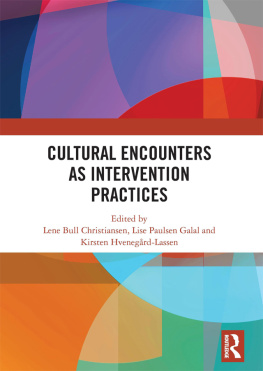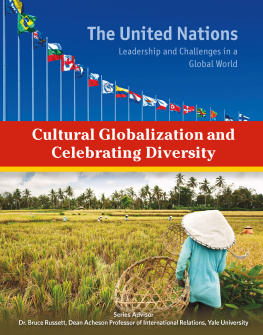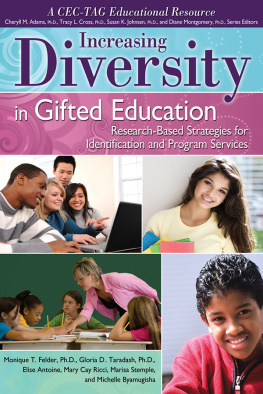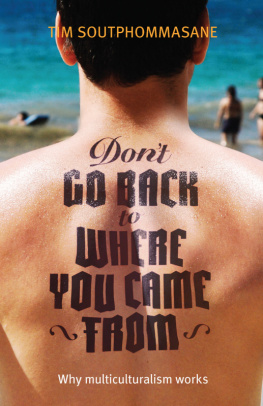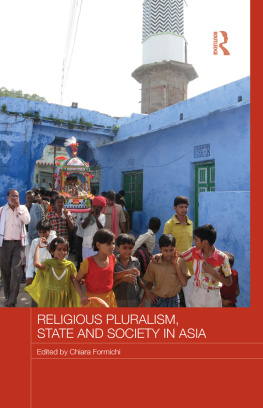Benyamin Chetkow-Yanoov, DSW
Celebrating Diversity
Coexisting in a Multicultural Society
Pre-publication
REVIEWS,
COMMENTARIES,
EVALUATIONS
O ne only needs to read the local newspaper or listen to the evening news to become aware that conflict among diverse groups, both within a nation or between nations, has throughout history continued to lead to violence and death. Professor Chetkow-Yanoov provides the reader with an understanding of the sources of such controversies and goes on to critique the widely held solutions to them.
More important, he proposes a new resolutioncoexistence. This paradigm allows each national, ethnic, religious, or other group to maintain its distinctive identity, but also requires that each respect the rights and privileges of all others. The author discusses ways in which this proposition can be achieved and illustrates it with numerous examples. For the many social scientists committed to the furtherance of peace in the world, this volume is important reading.
Paul H. Glasser, PhD
Professor, Rutgers,
The State University of New Jersey
School of Social Work
More pre-publication
REVIEWS, COMMENTARIES, EVALUATIONS
Celebrating Diversity makes a valuable contribution to peace theory and practice. Chetkow-Yanoov addresses the complex causes of conflict in civil societiesracism, oppression, and intergroup rivalry. This book looks to positive examples from Canada, Holland, Israel, Namibia, and the United States to cite strategies to help diverse groups live together with respect in a pluralist society. The author provides useful examples of how citizens can become politicians and engage in organized protest and ways that professionals can empower citizens to take action to correct many of the injustices that cause violence throughout the postmodern world.
Ian Harris, EdD
Executive Secretary, Peace Education Committee, International Peace Research Association; Professor, Department of Educational Policy and Community Studies, University of Wisconsin, Milwaukee
T his book is timely and valuable. It makes a convincing case for why traditional establishment-minority relations, based on either segregation or integration, are doomed to failure; and why cultural diversity, based on participation and coexistence, is not only about being politically correct, but offers the best long-run protection from the violence and conflict that threaten contemporary societies.
The book succeeds extraordinarily well in doing what it promises to doprepare for coexistence in a pluralist society. It first familiarizes the reader with basic concepts and approaches, then moves to building the tools, and finally taking action. It is interspersed with practical suggestions and an impressive range of examples of policies and practices of coexistence at all levels of the social structurenational, community, organizational, and the group. Written in a friendly style, this is a satisfying book for the intelligent reader who wants both the findings from academic research and practical solutions based on decades of accumulated experience in making cultural diversity work.
This is an optimistic, but by no means naive, book about what society could be like if only more of us would play fair, clean up our own mess, and hold hands and stick together. It is a thoughtful book that offers multiple options for how to achieve the goals of coexistence in diversity.
Dafna Nundi Izraeli, PhD
Professor of Sociology and Department Chair, Bar-Ilan University, Israel
Celebrating Diversity
Coexisting in a Multicultural Society
Celebrating Diversity
Coexisting in a Multicultural Society
Benyamin Chetkow-Yanoov, DSW
First published 1999 by The Haworth Press, Inc.
Published 2013 by Routledge
2 Park Square, Milton Park, Abingdon, Oxon OX14 4RN
711 Third Avenue, New York, NY 10017, USA
Routledge is an imprint of the Taylor & Francis Group, an informa business
1999 by The Haworth Press, Inc. All rights reserved. No part of this work may be reproduced or utilized in any form or by any means, electronic or mechanical, including photocopying, microfilm, and recording, or by any information storage and retrieval system, without permission in writing from the publisher.
Cover design by Moniea L. Seifert.
Library of Congress Cataloging-in-Publieation Data
Chetkow-Yanoov, B.
Celebrating diversity: coexisting in a multicultural society / Benyamin Chetkow-Yanoov.
p. cm.
Includes biographical references and index.
ISBN 978-0-789-00438-3 (pbk)
1. Pluralism (Social sciences). 2. Social integration. I. Title.
HM131.C7142 1999
Good ideas are really fine,
but implementation is divine.
ABOUT THE AUTHOR
Benyamin Chetkow-Yanoov, DSW, is a retired professor of community social work. He continues to engage in professional teaching and consultation in Israel. Dr. Chetkow-Yanoov has also pioneered undergraduate and graduate courses in conflict-resolution. The author of Social Work Approaches to Conflict Resolution: Making Fighting Obsolete and Social Work Practice: A Systems Approach (Second Edition, Haworth), he has served as a consultant for a Jerusalem project to prepare community volunteers for doing neighborhood conflict resolution. He has participated in the creation of four pe ace curricula for public schools in Israel, and one such curriculum for the public schools in Holland. His professional interests include the dynamics of program implementation, volunteerism, conflict resolution, social planning, and successful aging. Dr. Chetkow-Yanoovs current efforts include developing a project of networking among Israeli coexistence organizations (for the Abraham Fund), and teaching the conflict-resolution message at various international and local conferences. In past years, he contributed to intergroup dialogue between Palestinians and Israelis as well as between Jewish leftists and rightists.
Figures
Chapter 1
Chapter 2
Chapter 3
Chapter 4
Chapter 5
Chapter 6
Chapter 7
Tables
Chapter 4
Chapter 8
This book is a remarkable guide for those who strive for coexistence among individuals, groups, and subcultures in our pluralist diverse society. Professor Benyamin Chetkow-Yanoov believes that we can overcome tensions and conflicts in our society by creating structured dialogue among ourselves. The basis for any decision is conceptual, and the choice we have to make is between two extreme conceptssegregation and integration. Government and voluntary organizations should choose integration if they are interested in the prevention or reduction of tensions and conflicts.
Being an experienced social work educator and a strong believer in community organization, the author suggests that social action is the right strategy to create community readiness for coexistence. The reader can benefit from the review of basic principles for coexistence, learn from worldwide examples, or follow the exercises at the end of each chapter. The book is recommended to educators who are interested in designing curricula for coexistence.


